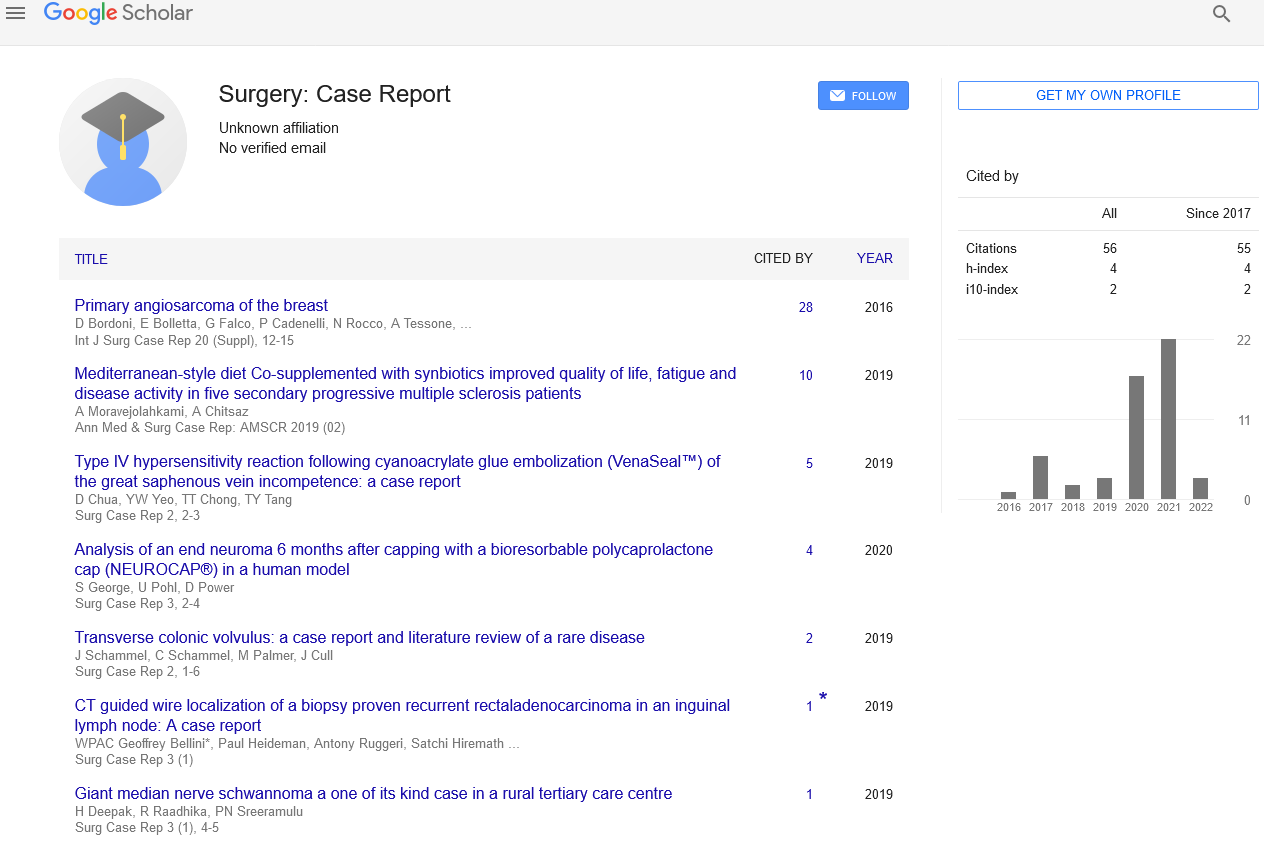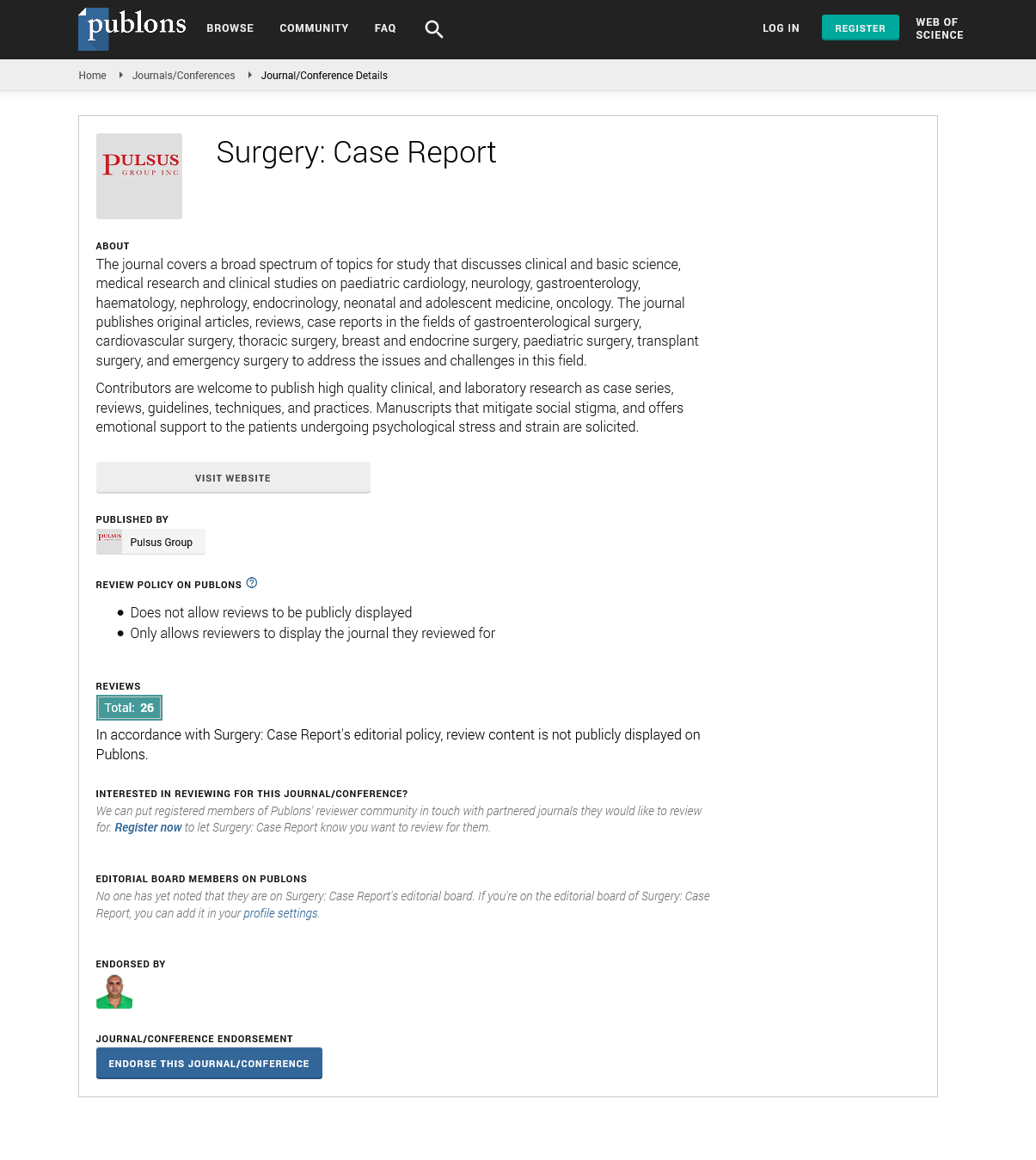Dental Restoration
Received: 07-Jan-2021 Accepted Date: Jan 22, 2021; Published: 27-Jan-2021
Citation: Spandana V. Editorial Note for Dental Restoration. Surg Case Rep 2021; 5:1.1
This open-access article is distributed under the terms of the Creative Commons Attribution Non-Commercial License (CC BY-NC) (http://creativecommons.org/licenses/by-nc/4.0/), which permits reuse, distribution and reproduction of the article, provided that the original work is properly cited and the reuse is restricted to noncommercial purposes. For commercial reuse, contact reprints@pulsus.com
Editorial
Dental restorations are frequently used to resolve esthetic problems. This is the incident in patients presenting staining due to intrinsic or extrinsic factors (examples of which are staining by antibiotics and smoking habits, correspondingly) or in restorations where a dense highlighting structure is required, as in the situation of metallic or highly crystalline ceramic posts. The masking ability of curative materials depends on their optical factors. Examples of restorations: Fillings are the utmost common type of dental restoration. They fill the cavity with gold, silver amalgam, or tooth-colour plastic and glass materials called combined resin fillings. Crowns are a tooth-shaped “cap” that is positioned over a tooth to re-establish its shape and size, appearance, strength, to hold a “bridge” in place, or to shield a dental implant. Teeth regularly need to be reduced equally around the tooth so that the crown will flawlessly restore the shape and size of the tooth. This is a long procedure.
Implants are small, affixing posts made of metal (usually of titanium or a titanium mixture) that are positioned into the bone socket where teeth are absent. The implant may require an attachment called a support that will act like a crown preparation. It is then shielded with a crown. Bridges are false teeth that are considered to “bridge” the gap created by one or more missing teeth. Bridges can be attached on either side by crowns and cemented everlastingly into place. Bridges are made by porcelain, alloys, gold, or a mixture. Fixed bridges are implanted and removed by a dentist. Dentures are a detachable replacement for missing teeth and surrounding tissues. It is used for gum disease, tooth decay, or an injury. They are made of acrylic resin, sometimes joined with metal supplements. Complete dentures substitute all the teeth. Partial dentures are deliberated when some natural teeth remain, and are engaged by metal clasps attached to the natural teeth. There are three types of dentures: immediate, conventional, and over denture. A conventional denture is detachable. It is inserted after several months once the remaining teeth are detached and the surrounding tissues have cured. An immediate denture is also detachable. It is implanted on the same day that the last of teeth are removed. An over denture is used when there are still some teeth residual. This type of denture fits over the teeth, where the remaining portions of teeth or implants are present.
The main use of precious metals in dentistry is in restorations including metal casting. Such applications contain cover inlays, partials, multiple-unit bridges, and crowns. The lost wax method of molding is commonly used to produce the castings. The higher- content gold alloys are comparatively soft and have been traditionally used for inlays and crowns, while the lower-content gold’s, which are stronger, remained used for multiple crowns and bridges. Strength demands for alloys improved over those of jewelry alloys and alloys looked with platinum flourishes for age hardening. Palladium was replaced for the more exclusive platinum. Palladium also reduced tarnish in the silver-bearing gold alloys allowing the formation of yellow-color gold alloys with a gold content reduced.






